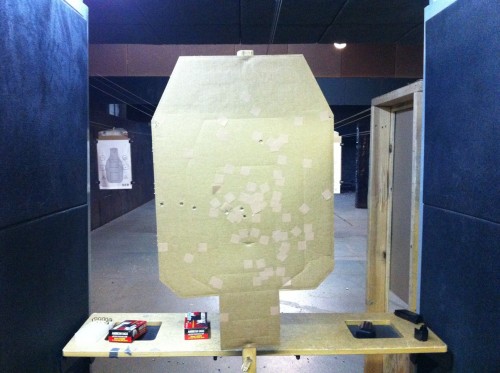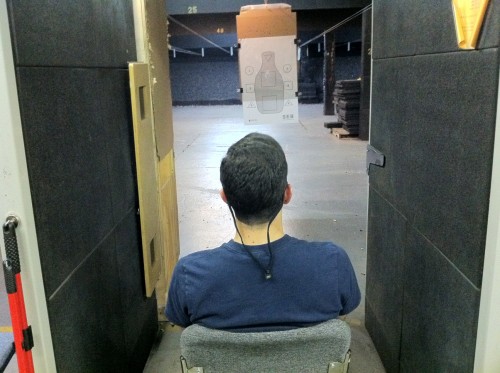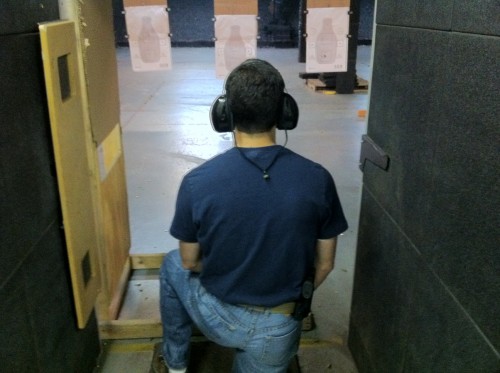The format for the course was much the same as last week. We first spent some time in the class room – this time with a police video which highlighted the differences between cover and concealment in a tactical situation. Cover is positing yourself with an object between you and enemy fire which is capable of absorbing or deflecting enemy fire. Examples of effective cover include the engine block of a car, a reasonably thick and sizable tree, or a telephone pole. Concealment on the other hand is simply positioning yourself in such a way as to make it difficult to impossible for an enemy to see you. Effective cover might include bushes, shadows, or even behind a wall. While bushes, shadows, and walls may do an effective job at hiding your position, they don’t stop bullets fired at you. While the distinction is fairly obvious, many people take cover from gun fire behind objects which are only effective for concealment. Think hiding behind a wall or door is effective cover? In most cases, it isn’t. Most handgun fire for example is capable of being fired from the outside of your home, and penetrating every exterior and interior wall, and coming out the other side. There’s a lot of variables here of course (a brick home would do a better job of blocking bullets fired from the outside than would a vinyl sided home) but the point is, don’t think drywall walls and wood doors will stop gun fire. After the brief video and discussion, we went right out on the range and went to work.
About half of the range time was spent honing our skills at shooting from behind cover. The idea here is to expose as little of your body as possible, gain target acquisition, fire the requisite number of rounds, then immediately return to cover. For this exercise, each student brought a wooden stand into their stall with cardboard on it to simulate cover.
We did various exercises shooting around both sides of the simulated cover which was quite challenging – about half our range time for the evening was spent firing from behind cover.
The next exercise involved shooting from a seated position from inside the stall – here’s a photo of my buddy John getting ready to begin:
At first I wondered why there was so much focus on shooting while seated, but then it dawned on me that this could come in very handy if I was attacked while in my car. Drawing your holstered weapon from a seated position can be tricky – you really have to concentrate on not crossing your body as you raise the gun to fire.
Next we spent some time firing from a kneeling position:
After a few kneeling while shooting exercises, we had to so some pretty challenging exercises which combined everything we learned for the evening. From a standing position, draw and fire two shots, then fire two from a seated position followed by two shots from a kneeling position.
The final exercise of the evening had the class move out of the stalls and down range. One at a time, course instructor Jeff Pedro had us lie down on a mat stomach side up with our feet toward the target. We then had to draw our weapon, fire shots at the target, and re-holster our weapon. We repeated this several times to help us get used to firing from a lying position.
I found The handgun II course to be quite challenging. The course teaches you to gain proficiency in firing your gun in positions you just don’t get to normally practice in a traditional gun range stall (which does little to prepare you for a “real world” encounter). As much as I enjoy shooting, this course was definitely “work” and pushed me – and I feel as though I’m a much better prepared individual as a result.





0 Comments